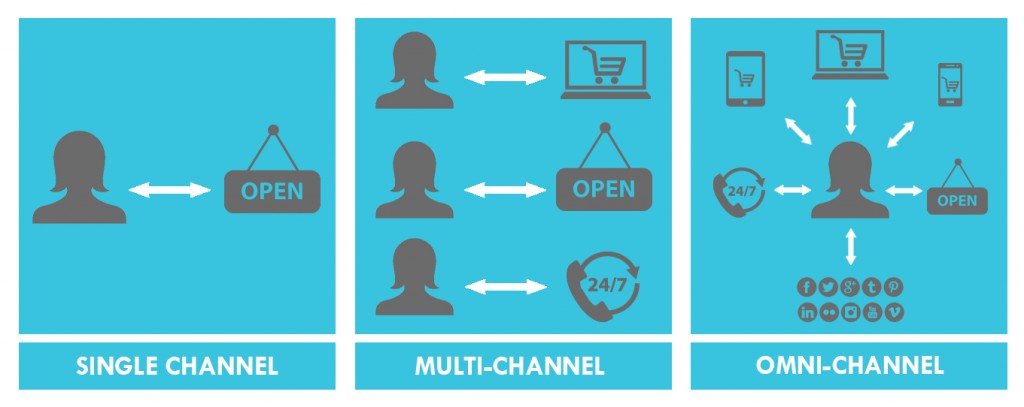The time of elaborate, multi-story shopping centers is rapidly coming to a close with the rise of eCommerce. Over the last decade, technology has inspired an online retail boom that has benefitted some retailers, while leaving others helpless. With the younger generations embracing smart phones and tablets, eCommerce’s role has shifted from an untested frontier to a vital pillar of the retail industry. In fact, total global business to customer (B2C) eCommerce sales was expected to top $1.5 trillion in 2014, and it is anticipated to grow 88.4% to $2.3 trillion by 2017.
eCommerce in the United States is also expected to have an annual growth rate of 9.8% between 2013 and 2018. Europe, on the other hand, is expected to grow larger with an annual growth rate of 12% within the same time frame. In addition to those two established markets, emerging markets will also play a key role in the future as the demand for smart phones and tablets will grow alongside a burgeoning middle class. Furthermore, a study made by OC & C Strategy Consulting shows that eCommerce export values will increase annually by 30% between 2013 and 2020.
The Ascension of Online Grocery Shopping
In most countries, shopping for groceries is the largest category of retail spending, but it has also been one of the most resistant to change. In the United Kingdom, for example, online grocery shopping only accounts for 4.4% of the total eCommerce. Unsurprisingly, it is not expected to be that way much longer. The global online grocery market is expected to blossom from $36 billion in 2013, to $100 billion by 2018. In turn, this development will encourage retailers and companies offering supply chain solutions to rethink their current strategies for distribution centers (DC). As the increase for highly perishable goods goes up, the need for DCs that are of close proximity to major population centers will go up as well.
The Rise of Omni-Channel Retail
Omni-channel is a multichannel approach to sales that seeks to provide the customer with a seamless shopping experience whether the customer is shopping online from a desktop or mobile device, by telephone, or in a bricks and mortar store. This approach to retail is becoming increasingly popular, and will soon replace the multi-channel approach. However, this transition will be far from smooth for numerous reasons:
- It is estimated that 28% of shoppers who made their first purchase from a retailer online will migrate to said retailers physical store to purchase a product. Furthermore, 22% of first time buyers who purchase a product from a physical store will migrate to that retailer’s website. This process is called channel migration, and if a retailer does not implement a smooth omni-channel approach, then it will risk disappointing almost half of its customer base. Channel migration will also affect revenue streams and the productivity of physical stores.
- The Omni-channel approach will also force retailers to rethink the established method of focusing on certain channels rather than the consumer. Retailers will have to shift to a consumer centric model in order to provide a superior customer experience based on choice, cost, convenience, and consistency.

Although the shift to the Omni-channel approach will be challenging, it could be significantly rewarding for retailers as sales will be enhanced through availability and responsiveness based on providing an exemplary customer experience.
Distribution Center Frenzy
Retail drives 40% of supply chain real estate. Because of this fact, there will be a major overhaul for distribution centers on both a national and global level. Retailers will be required to acquire distribution real estate that will fit into their Omni-channel approach in order to stay competitive. Furthermore, because of the importance that eCommerce has in this approach, fulfillment in DCs will also have to be flexible because of the shift from pallet orders made by stores to individual orders made by online shoppers. This in turn will affect the type of space that a retailer will opt to buy as size of the building, amount of loading doors and docks required, external yard space, and etc. will all be taken into account.
Logistics’ Role in an Omni-Channel World
Logistics is already widely regarded as a crucial piece of a successful retailer’s business plan. Its role will be even greater as the eCommerce boom continues to unfold and the Omni-channel approach’s popularity becomes more widespread. This is due to the fact that an efficient supply chain will allow a high level of service to be provided across all channels. The acquisition of the right DC that is in close proximity to major populations is also an increasingly difficult task for retailers because of the limited number of supply and the increase of demand. This is why numerous retailers opt to partner with Third Party Logistic firms that can supply the necessary DC and fulfillment services required. Furthermore, fulfillment will also play a key role to any Omni-channel operation. It will be seen as a competitive advantage as consumers begin to value time over reliability. Convenience and reliability, however, will still be deemed as important.
By opting to utilize a logistics partnership, a retailer will be able to be more flexible, but at the same time adopt the Omni-channel approach that is sweeping the world.
Resources:
http://www.jllblog.com/retail/2015/01/12/four-retail-distribution-trends-to-watch-in-2015/
http://www.jll.com/services/industries/industrial-and-logistics/the-global-omni-channel-revolution
http://www.agilone.com/define-omni-channel-retail
http://www.supplychain247.com/article/four_reasons_2014_will_be_the_year_of_the_global_distribution_center/
http://www.dreamspear.co.uk/what-is-omni-channel/
